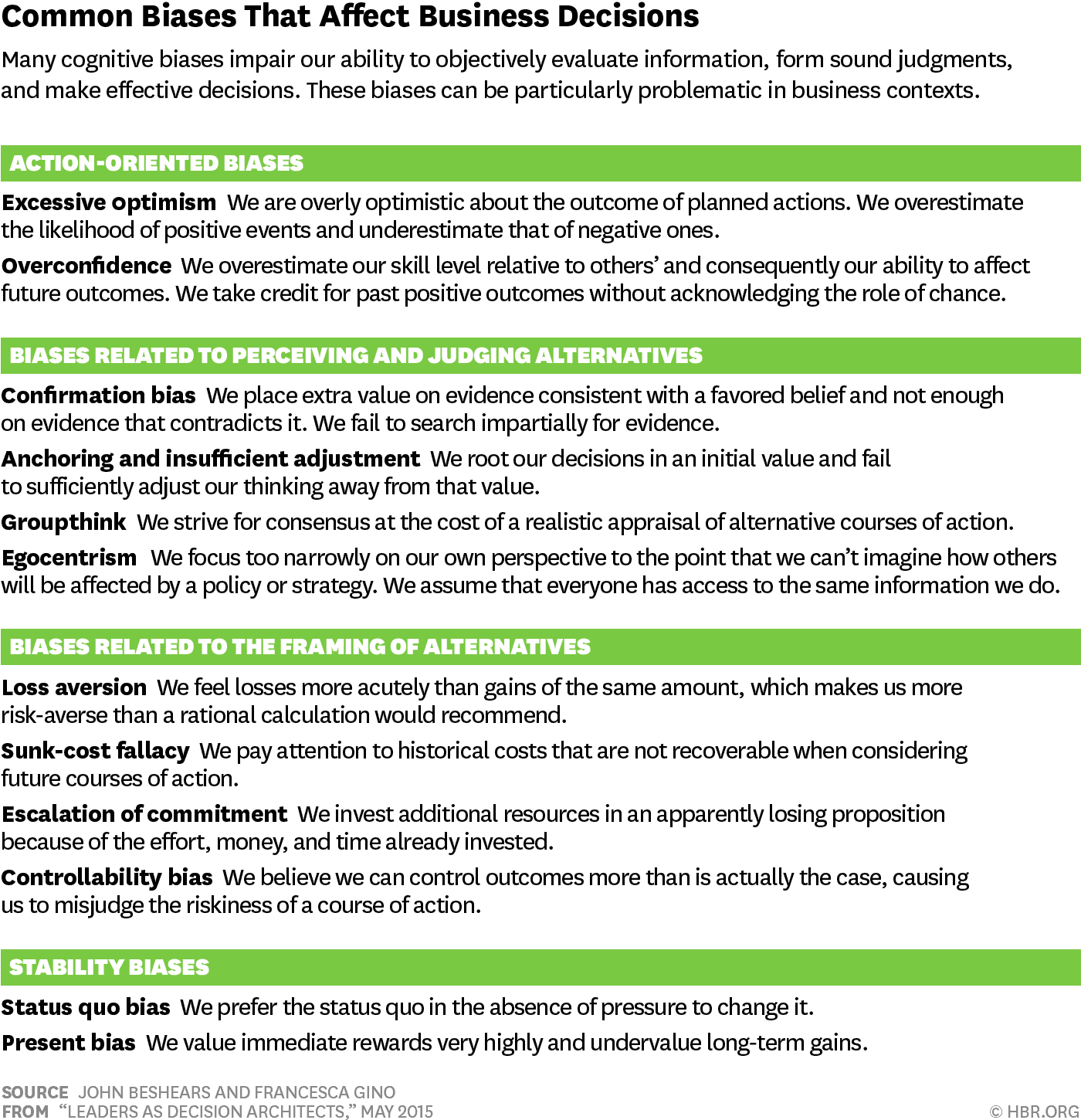Meetings are over-rated
Okay, I said it. I have seen too many organizations put together committees to drive “alignment”, when in actuality, they are trying to mollify a miscreant or hedge away the risk by legislating an answer. Too often, it fails to achieve either of these goals. The disgruntled just get more attention, and the middle-of-the-road answer is often the least safe choice anyways. Bain talks about this a lot in the Founder’s Mentality video here.
Collaboration is critical, meetings are not.
Most meetings are not necessary
Stop having so many lame meetings. Why do people believe all meetings are useful. Most aren’t. Putting people in a room is not consensus, it’s just – well – people in a room.
Make the decision
Stop frittering around. Quit legislating an answer. Think about the problem. Get some good advice. Clarify your objective. Determine the evaluation criteria. Watch out for biases. Stress test your conviction, make the decision.
Harvard Business Review talks a lot about decision architecture. . .setting up the framework, organizational, rules, culture, and incentives so the right people make the right decisions. Don’t be an administrative mailman and bureaucrat.
Tons of biases
One of my favorite classes in MBA was the study of individual, team, and organizational behavior. Basically, humans are beautiful and messy. We have 100+ biases and heuristics we use every day to try and cut-through the clutter of decisions. Some are useful, many are not.

Great collaboration can alleviate some biases
For me, a great collaboration looks like:
- An small group of relevant, diverse people;
- Gathered around a specific topic and context;
- Educated through curated content given before the meeting;
- Aware of which stage of the process they are at (madman, architect, carpenter, judge);
- Full of professional trust, so people are free to speak their mind (and not get offended);
- Empowered to make decisions and not “check with their boss”;
- Willing to do the proletariat work of implementation after the meeting
Meetings could be better. Fundamentally, we need to ask:
- What are we trying to achieve?
- Who should be involved in the decision making?
- What information / analysis / insight do we need to make a decision?
- What’s the logic, framework, methodology on our decision(s)?
- What communication (after-thought) is needed after making a decision?
1. Meeting minutes:
I am a big believer of meeting minutes. It summarizes everything that was discussed so far. It keeps track of past progress so you don’t waste time re-hashing the past.
2. Start meetings on time
Don’t wait around for late people. If they are late, they should be made aware of that fact. Don’t coddle the bad children. Follow Drucker. Nice follow-up, give homework to people (including those who don’t show, are late, leave early).
3. Send out the agenda
Don’t go to meetings without agendas. Inevitably, you spend the first 1/3 of the meeting, “storming” and “norming” before you start “performing.”
4. Do the pre-work
Give people enough data and analysis, so they can form their opinions and be insightful. Get the boring “information communication” part out of the way early. Honor people’s time.
5. Let people argue it out (constructively)
In an interview with the head of the World Bank, Jim Yong Kim said that he spends a lot of his time in meetings. . trying not to speak and prematurely tilt the conversation and debate in one direction. Wow, restraint from the executive office. Excellent. Idea fight club at its best.
6. Remove people from the meeting
How many people can you remove from the meeting and still get the work done. “Keeping people in the loop” does not count. That is something you can do by email. Every day I try to “un-invite” someone from a meeting. . and usually, they are grateful. Get rid of the waste and muda.
7. Charge people for the meeting time
I heard from a client that their previous employer would charge each department for the opportunity cost of the meeting. Put another way, every time you held a 2 hour meeting of 10 people who have a $200/hr imputed salary. . . it was 2 x 10 x $200 = $4,000 which hit your meeting expense account. . .
Put a $ on the opportunity cost. Nice.
